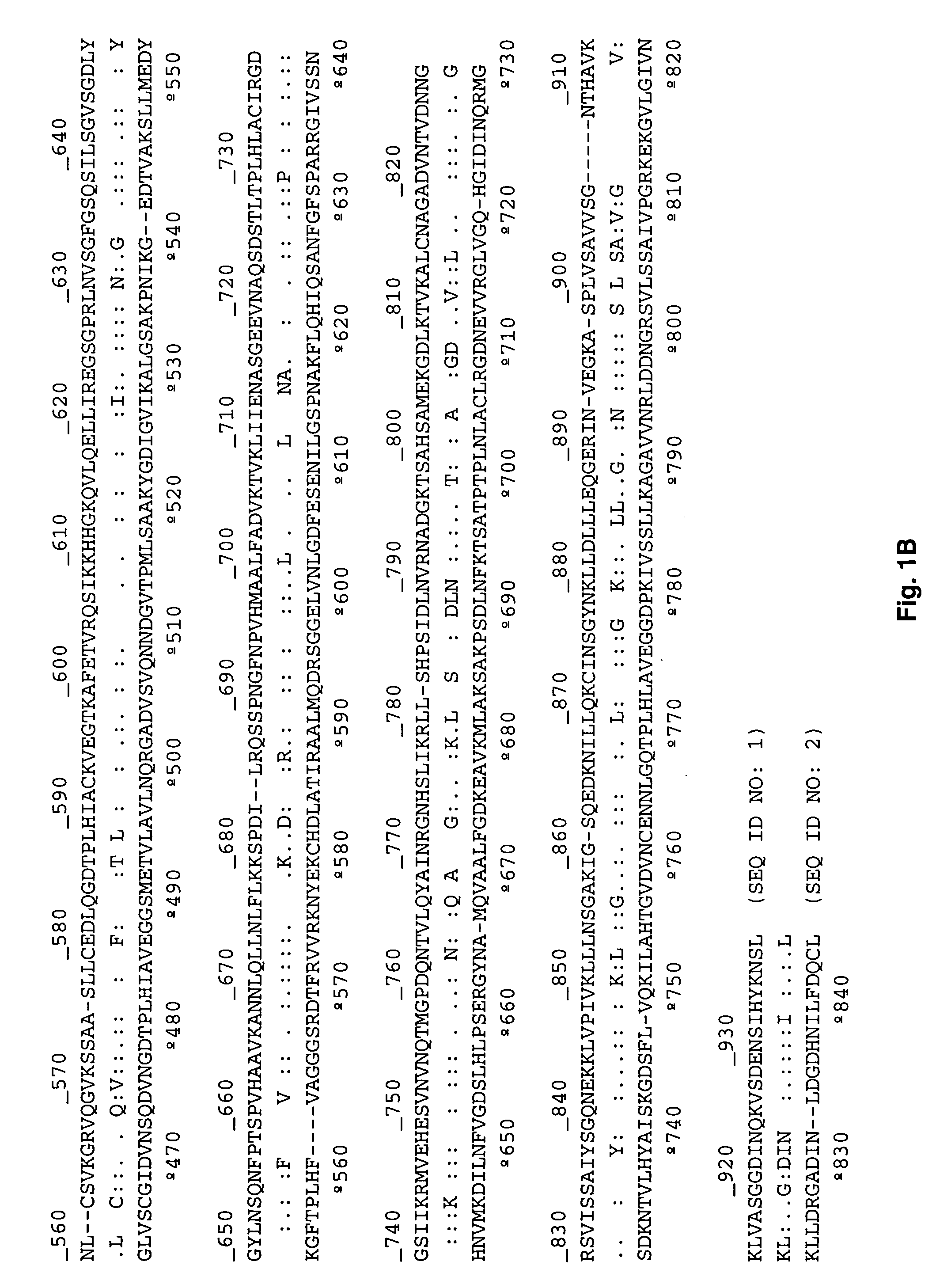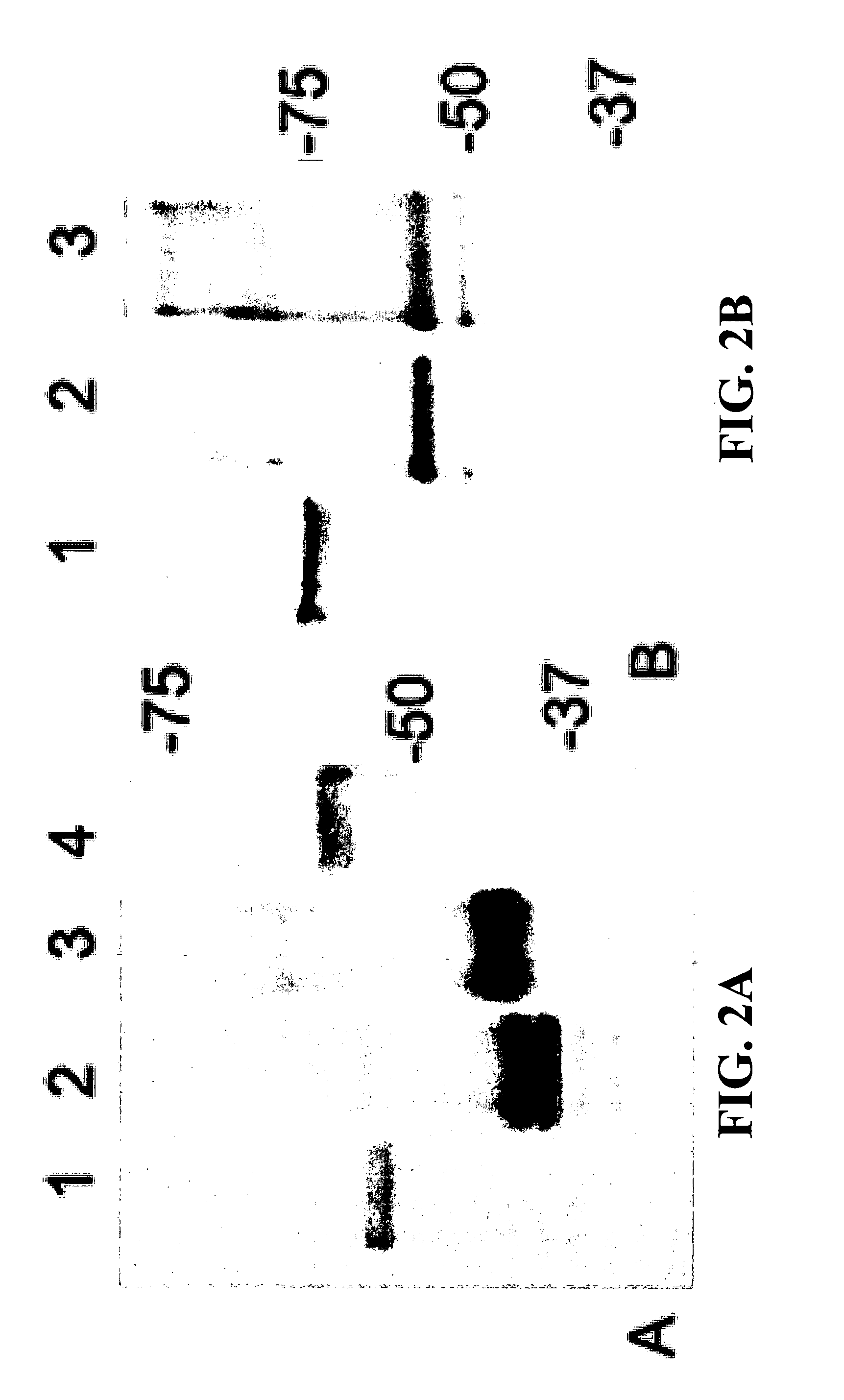P153 and P156 antigens for the immunodiagnosis of canine and human ehrlichioses and uses thereof
a technology of human ehrlichioses and antigens, applied in the field of molecular and immunodiagnostics, can solve the problems of difficult diagnosis, inability to respond well to antibiotics in chronically infected dogs, and shortcomings of indirect fluorescent-antibody tests
- Summary
- Abstract
- Description
- Claims
- Application Information
AI Technical Summary
Benefits of technology
Problems solved by technology
Method used
Image
Examples
example 1
Characterization of E. canis p153 and E. chaffeensis p156 Proteins
[0043]The E. canis p43 protein gene was identified from a Lambda Zap II expression library as previously described (McBride et al., 2001; U.S. Pat. No. 6,355,777). The original 2.4-kb clone consisted of an open reading frame (ORF) encoding a deoxyguanosine-triphosphate triphosphohydrolase gene and a downstream 229-bp intergenic space preceding the truncated p43 gene fragment. A primer-adapter PCR method was used to determine the complete sequence of the p43 open reading frame using E. canis genomic DNA (Jake, North Carolina strain) as a template. The amplicons were sequenced directly with primers used for amplification or cloned into TOPO / TA for sequence analysis. The E. chaffeensis ortholog (p156 gene) was identified by performing a BLASTn search of the E. chaffeensis genome sequence with the entire E. canis p43 clone (2.4-kb).
[0044]The E. canis p153 and E. chaffeensis p156 genes were divided into large fragments (1 ...
PUM
| Property | Measurement | Unit |
|---|---|---|
| weight | aaaaa | aaaaa |
| indirect fluorescent- | aaaaa | aaaaa |
| fluorescent- | aaaaa | aaaaa |
Abstract
Description
Claims
Application Information
 Login to View More
Login to View More - R&D
- Intellectual Property
- Life Sciences
- Materials
- Tech Scout
- Unparalleled Data Quality
- Higher Quality Content
- 60% Fewer Hallucinations
Browse by: Latest US Patents, China's latest patents, Technical Efficacy Thesaurus, Application Domain, Technology Topic, Popular Technical Reports.
© 2025 PatSnap. All rights reserved.Legal|Privacy policy|Modern Slavery Act Transparency Statement|Sitemap|About US| Contact US: help@patsnap.com



